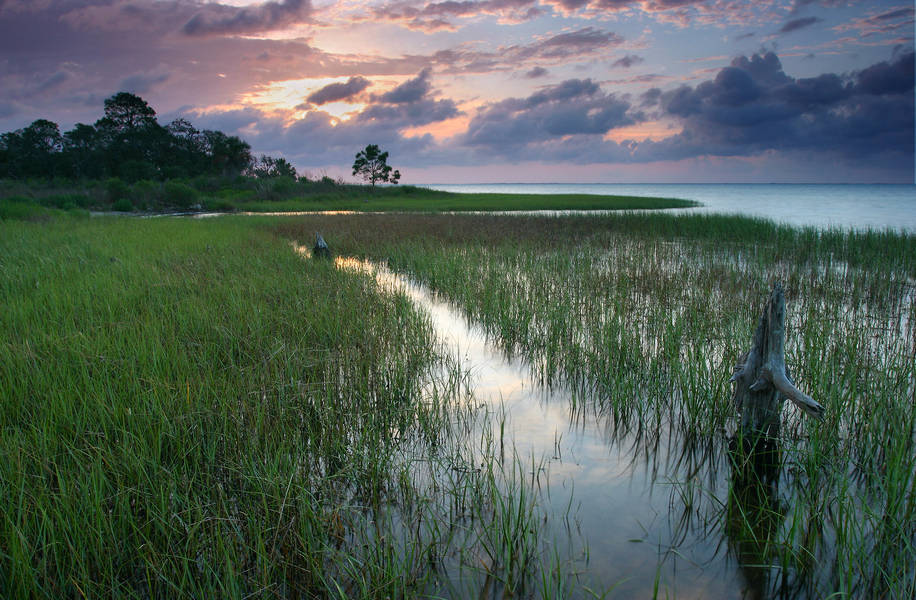- What does a permit cover?
- Are there any waterbodies that are prohibited?
- What areas are approved for deadhead logging?
- How do I apply to recover deadheads?
- How much will it cost for me to log?
- What information is required for the application process?
- Will I be the only one logging in my permitted area?
- How many deadhead logs are left?
- What is considered a deadhead log?
- What is required in addition to applying for the permit?
- When is the next master deadhead logging training?
1. What does a permit cover?
An issued permit allows recovery and removal of pre-cut submerged timber from a contiguous 20-mile river reach on one named waterbody. One easement per permit is required.
2. Are there any waterbodies that are prohibited?
Yes. Deadhead logging is not allowed in aquatic preserves, landlocked lakes and several rivers. Logging is also restricted by state parks or near endangered species such as gulf sturgeon spawning locations.
Download a List and Map of DEP Prohibited Waterbodies (PDF 1.7 MB)
3. What areas are approved for deadhead logging?
4. How do I apply to recover deadheads?
You will need to submit a permit application, Form 62-330.060(1) including Sections A, C and F, and provide the permit fee of $420.
5. How much will it cost for me to log?
- The 1 year (13 month) Environmental Resource Permit application fee is $420.
- The easement fee is $5,500 (annually) plus a processing fee whish is updated annually on March 1.
- The required liability insurance to maintain the Use Agreement is $200,000 per person and $300,000 per accident for personal injury or death.
6. What information is required for the application process?
- GPS points for the start and stop of the river reach as well as for the location that is going to be used to remove deadheads from the water.
- Photos of the removal site(s) and vessel(s) that are going to be used in the log recovery operation.
- Landing authorization from landowner for the site where logs will be removed from the water.
- Archaeological survey (as required)
- Publication of Notice of Application.
7. Will I be the only one logging in my permitted area?
No. The state of Florida does not have an exclusionary permit program. There may be several loggers permitted to work in the same area of the river.
8. How many deadhead logs are left?
Unfortunately, there is no way of knowing how many deadhead logs remain on the river bottoms. Numerous waterways have already been permitted for logging operations; however, there are still a great number of water bodies that have never been a part of permitted logging activities.
9. What is considered a deadhead log?
A Permit to retrieve Pre-cut Submerged Timber, or deadhead logs, allows the removal of logs that were cut during the state’s logging boom from the late 1800s to the early 1900s. Most of these timbers can be recognized by the ax marks at the end of the log. A permit does not allow recovery of any deadfall or naturally occurring timber that may be found in the river system.
10. What is required in addition to applying for the permit?
- Attend the Master Deadhead Logger Certification Classroom Training: A permittee will be required to attend a department-sponsored course and receive a Master Deadhead Logger Certification. This educational component of the permit provides the logger with legal and environmental knowledge regarding the conditions of his permit. This course is held in coordination between several sections of the department, the Department of State's Division of Historical Resources, and the Division of Forestry.
- Use Agreement: Enter into an agreement with the state through a Board of Trustees of the Internal Improvement Trust Fund of the State of Florida – Sovereignty Submerged Lands Use Agreement for Recovery of Pre-cut Submerged Timber. A Use Agreement is executed for a period of 1 year. The fee for the easement is $5,500, plus an easement processing fee which is updates annually open March 1. As a condition of the easement, the permittee will be required to maintain liability insurance in the amount of $200,000 per person and $300,000 per accident for personal injury or death.
11. When is the next master deadhead logging training?
Visit our master deadhead logging training page for information on upcoming training events.


